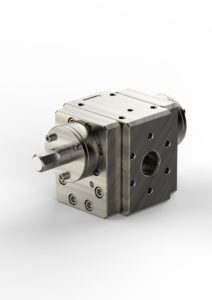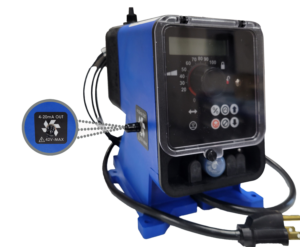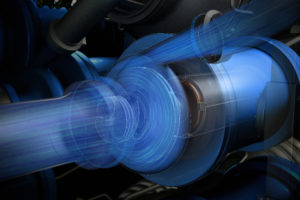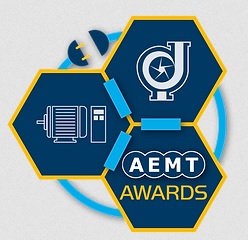Precise and Fast Metering of Blowing Agents when Developing Foaming Technology at the Fraunhofer Institute for Chemical Technology ICT
Efficient insulating materials, foams for structure applications, biobased, flame resistant and high-performance foams are currently in strong demand on the market. Researchers from the foaming technology group at Fraunhofer ICT play a crucial role in developing foamed materials whose properties are customized for the respective applications.
In addition to material development, the researchers direct most of their attention towards improving processes. This has allowed them to develop expertise in the area of particle foams and continuously manufactured extrusion foams (XPS process). At the plant, ICT initiated a collaboration with a renowned partner in the area of XPS systems and Lewa in the area of metering. This led to the formation of a pilot plant station at ICT used for easy-to-implement research and development tasks, allowing developments to be carried out from the formulation of raw products all the way to the component testing stage.
Research projects on particle foams and semi-finished products
The newly available technology at the institute allows complex topics related to foam production to be addressed and for applications to be tested almost all the way to the pilot production stage. This procedure establishes the entire production chain for particle foams, from production of beads and additional processing, all the way to the molded part process. In addition to particle foams such as EPS particles laden with pentane or directly foamed particles of polypropylene (EPP), directly foamed semi-finished products are also produced. Various biopolymers based on lactic acid and cellulose esters are developed into particles and semi-finished products in both processes. High-performance insulating materials based on expanded polystyrene particle foam are being developed for compound systems as part of the EU project FoAM-BUILD (EU FP7 609200). The EU project WALiD (EU FP7 309985) was created to develop sandwich core materials for rotor blades in wind power plants. To this end, various high-performance thermoplastics are foamed with various blowing agent mixtures in a direct foaming process. One example is polyester used to produce X-PET. We are also undertaking various projects in collaboration with industrial companies, one of which endeavors to optimize blowing agent formulas to improve foamability.
Customized adaptation to a wide application area
In order for the system to be used uniformly in the various projects, it should be compatible with all conventional blowing agents. All important process parameters such as suction pressure, cooling and back pressure are clarified in the planning phase so that the requirements of a wide array of applications are met. Due to limited space on-site, the system was intentionally mounted on a compact mount base together with a mechanical part and control cabinet and delivered in a fully assembled state, including piping and wiring. High-quality V4A stainless steel (1.4571 or comparable quality) and, as diaphragm material, PTFE or V4A stainless steel (1.4401) are used for wetted components of the ecofoam. It was not necessary to adapt the components in any way because due to their resistance, the materials utilized can be used for all conventional blowing agents, from halogenated hydrocarbons, butane, pentane and propane all the way to CO2.
Lewa installed various auxiliary components such as a cooling jacket at each pump head, a suction-side plate heat exchanger (radiator) and an in-line cooler to ensure that the blowing agents are in a fluid state and that they deviate sufficiently from the respective steam pressure. These components are required in CO2 applications to ensure that the CO2 is cooled before entering the pump. This can reduce the starting fluid temperature of 20 °C at an associated CO2 steam pressure of 57 bar to approximately 5 °C. This helps to provide the system with adequate protection from cavitation. There is no need to cool other blowing agents such as butane, provided that the suction-side conditions have been met.
Low-maintenance technology and quick control
Thanks to Lewa diaphragm technology, which is highly efficient, absolutely leak-proof and features an integrated monitoring system, the ecofoam system can be operated safely and reliably, even in the harshest operating states. In addition, time spent on maintenance is substantially less than systems with piston technology. The system can be used at extruder pressures up to 400 bar. A suction-side strainer, two contact pressure gauges for pressure monitoring in the pressure- and suction-side pipeline and a component-tested safety valve to prevent excess pressure all contribute to a safe system design. A flow rate over a wide adjustment range of 0.1 l/h to 10 l/h can be achieved through the combination of speed control and manual stroke adjustment of the pump. The system is equipped with a highly accurate mass flowmeter and the LEWA smart control unit, so fast, precise control is guaranteed. As a result, control of the blowing agent s flow rate always depends on the extruder capacity. To this end, the plausibility of specifications (target values) and feedback (actual values) is continuously monitored. This ensures that the quality of the end product is uniform at all times.







